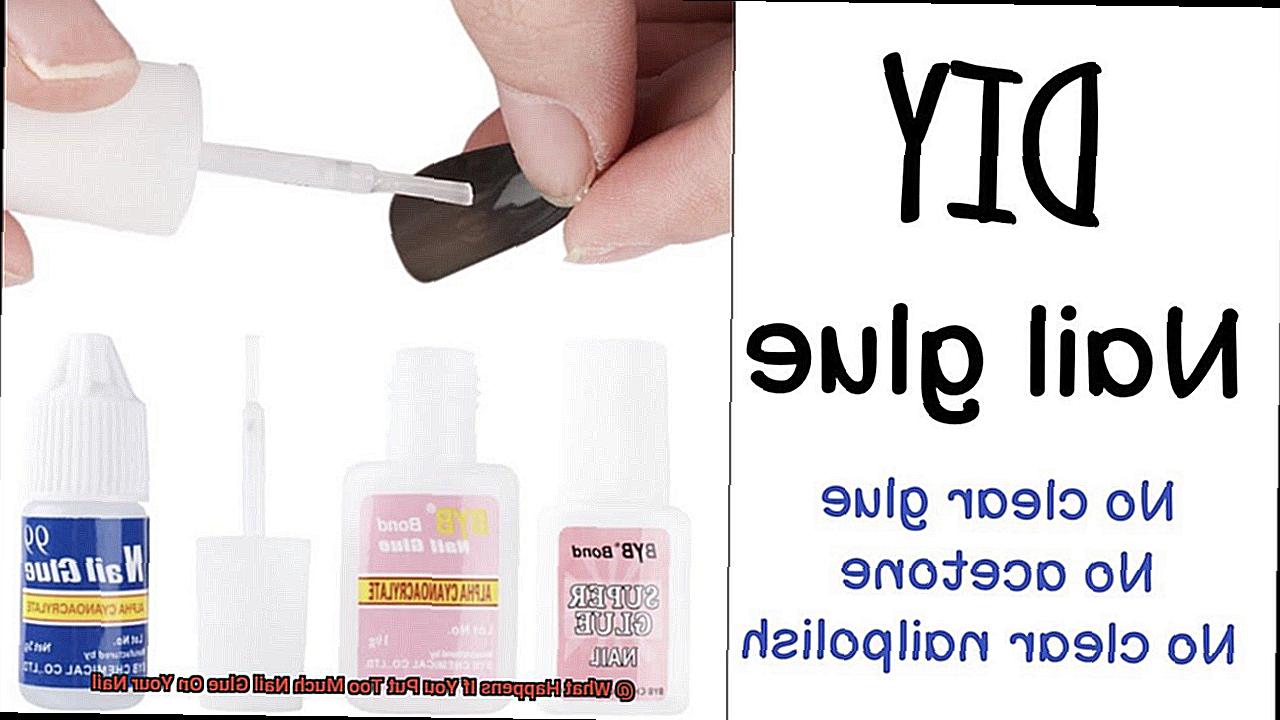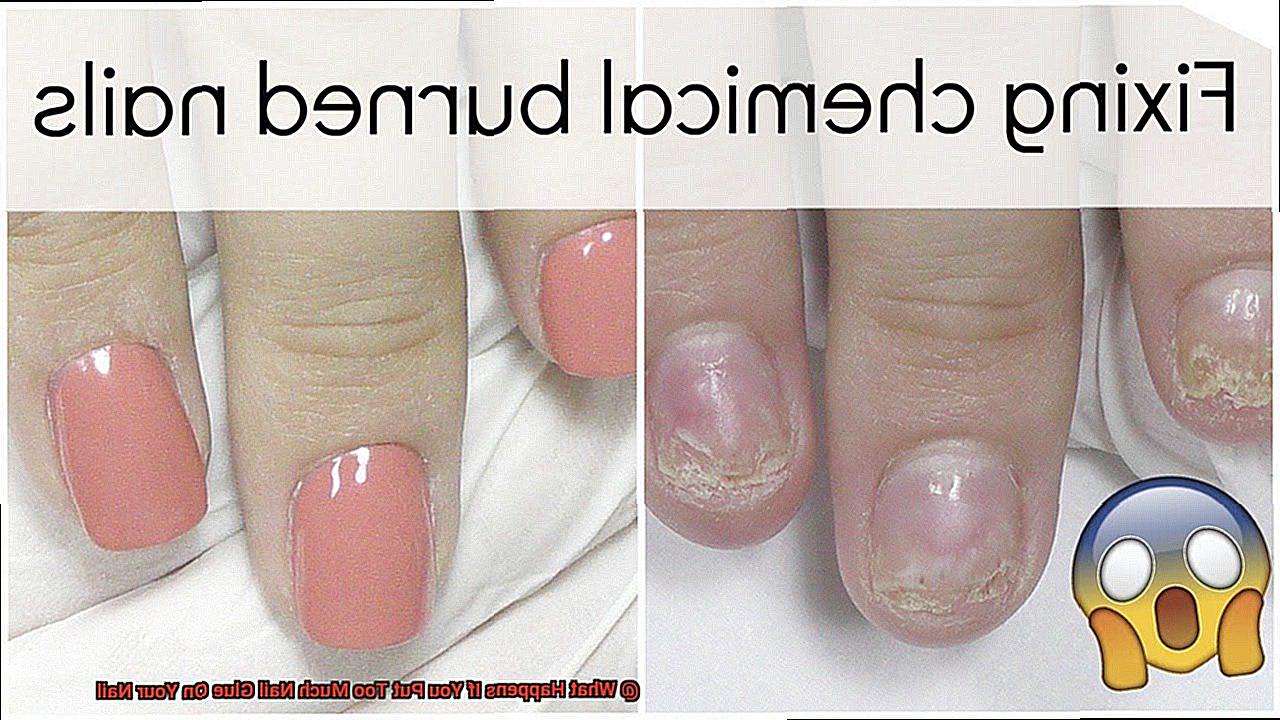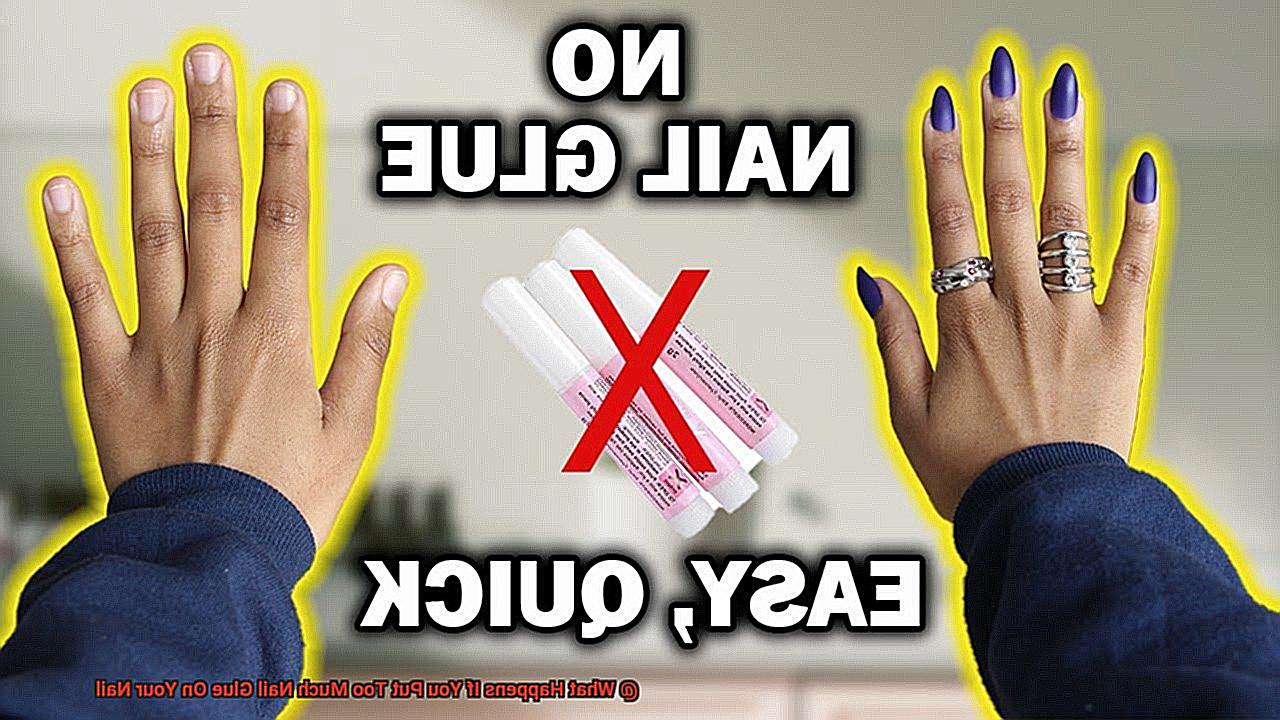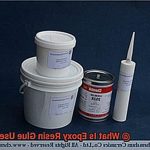Are you a die-hard fan of gel nails? If that’s the case, then you must be familiar with nail glue. It’s an indispensable part of the gel nail application process. However, if not used correctly, it can cause more harm than good. Have you ever gone overboard with nail glue on your nails? Do you know what it can do to them? If not, then stick around.
Nail glue is a convenient and easy-to-use adhesive that is commonly used in nail art application. But, applying too much glue or overusing it can lead to serious damage. It can cause your nails to lift, infections to set in, and trigger allergic reactions. You may also experience pain and discomfort that can last for days.
In this blog post, we’ll dive into the adverse effects of using too much nail glue on your nails. We’ll explore the reasons why it happens, the symptoms one may experience, and discuss possible treatments. So if you want to steer clear of the risks associated with nail glue and keep your nails healthy and robust, read on. We’ve got all the essential information you need.
What is Nail Glue?
Contents
The secret lies in nail glue, a strong adhesive designed specifically for use on nails. Nail glue is made up of a blend of chemicals that create a robust bond between the natural nail and the artificial nail or nail art.

The two primary ingredients in nail glue are ethyl cyanoacrylate and polymethyl methacrylate. Ethyl cyanoacrylate acts as a fast-acting adhesive, creating a strong bond within seconds of application. Meanwhile, polymethyl methacrylate is a type of plastic that hardens the bond and strengthens it.
Nail glue comes in different types, including brush-on, dropper, and squeeze tube formulas. Brush-on nail glue is typically used to attach artificial nails, while dropper and squeeze tube formulas are better suited for nail art applications.
When using nail glue, it’s crucial to follow the manufacturer’s instructions and exercise caution. Overuse or misuse of nail glue can lead to potential health risks such as skin irritation or allergic reactions. It’s also important to avoid applying too much glue as this can cause the nail to become brittle and weak, leading to breakage and damage.
In addition, excess nail glue may not dry properly, leading to tackiness that can make it difficult to perform daily tasks. In extreme cases, using too much nail glue can even lead to infections or other serious health issues.
To avoid these risks, always use a small amount of glue and avoid applying it directly onto your skin. If you experience any irritation or discomfort after using nail glue, remove it immediately and seek medical attention if necessary.
Negative Consequences of Excessive Nail Glue
We all know that nail glue is an essential tool for achieving long-lasting and beautiful nails. However, did you know that excessive use of nail glue can lead to negative consequences? Let’s dive deeper into the potential risks of overusing nail glue.
Firstly, using too much nail glue can result in a buildup of the adhesive on your nails. This buildup can be challenging to remove without causing damage to your nail bed, which may lead to weakened and brittle nails that are prone to breakage. Nobody wants to deal with that kind of hassle.
In addition to this, nail glue often contains chemicals such as cyanoacrylate, formaldehyde, and toluene. These chemicals can cause allergic reactions and skin irritation, especially with prolonged exposure. In severe cases, it can even lead to chemical burns and blisters. That is not a fun experience.
Furthermore, when you apply too much nail glue, it can seep into the surrounding skin, causing painful and unsightly redness and inflammation. Excessive use of nail glue can also interfere with the natural growth of your nails by affecting the flow of nutrients and oxygen to the nail bed.
To avoid these negative consequences, it is important to use nail glue in moderation and follow the instructions carefully. If you experience any negative effects from using nail glue, it is best to discontinue use immediately. Seek medical attention if necessary as it’s always better to be safe than sorry.
Brittle and Weak Nails
While it may sound like a good idea, it can lead to brittle and weak nails that break easily. In this article, we’ll discuss the effects of excessive nail glue on your nails and how to avoid brittle and weak nails.
Nail glue typically contains cyanoacrylate, a quick-bonding adhesive that activates on contact with moisture. Applying too much nail glue can cause it to seep into the nail bed and cuticle area, damaging the nail plate. This damage makes your nails susceptible to cracking, splitting, and breaking.
Moreover, weakened nails are more vulnerable to environmental factors such as heat, cold, and humidity. They also have difficulty retaining moisture, leading to dryness and further damage.

To avoid brittle and weak nails, follow these tips:
- Use the right amount of nail glue as directed by the manufacturer.
- Keep your nails clean and dry regularly.
- Moisturize your nails with appropriate products to maintain their health.
Remember, your nails are not just objects of beauty but an essential part of your body too. Taking proper care of them should be a priority to prevent any damage or injury.

Skin Irritation and Allergic Reactions
Nail glue is a convenient and popular product for those who love to keep their nails looking fabulous. However, overusing it can lead to skin irritation and allergic reactions that can put a damper on your nail game. The delicate skin around your nails is susceptible to these reactions due to the chemicals found in nail glue, such as cyanoacrylate and formaldehyde.
Skin irritation caused by nail glue can result in redness, swelling, and pain. It’s essential to remove the glue immediately and wash the affected area with soap and water. An ice pack can also be applied to reduce swelling and alleviate pain. If the irritation persists or worsens, it’s vital to seek medical attention from a dermatologist.
In addition to skin irritation, nail glue can also cause allergic reactions. Individuals with sensitive skin or those who have had an allergic reaction to nail glue in the past are at higher risk of experiencing symptoms such as itching, hives, and skin swelling. In severe cases, difficulty breathing may occur, requiring emergency medical attention.
To avoid skin irritation and allergic reactions from nail glue, it is essential to use it in moderation and follow the manufacturer’s instructions carefully. Applying only a small amount directly onto your nails will prevent getting the glue on your delicate skin. If you accidentally get nail glue on your skin, remove it immediately with a cotton swab or tissue.
Difficulties with Drying
This can lead to a range of difficulties with drying, which can be frustrating and time-consuming.
If you’re guilty of over-gluing your nails, you may have experienced longer drying times due to a lack of air reaching the glue. This can result in tacky or wet nails that take forever to dry. Additionally, excess glue can cause lumps and bumps on the surface, leaving you with an uneven and difficult-to-work-with canvas.
But wait, there’s more. Too much glue can also make the removal process a nightmare. The excess glue can create a stronger bond between your nail and the artificial nail or overlay, which means you’ll need to use more force or harsher chemicals to remove them. This can be damaging to both your natural nails and skin.
So how do you avoid these difficulties? Firstly, remember that less is more when it comes to nail glue. You only need a small amount for it to work effectively. If you’ve already over-glued, don’t worry – there are ways to fix it.
Start by removing any excess glue with a dry cotton swab before it dries. This will help prevent lumps and bumps from forming on your nails. If your nails are already lumpy, try gently filing them down with a nail buffer to create a smooth surface.
When it’s time for removal, soak your nails in warm soapy water for a few minutes before attempting to remove them. This will help to soften the glue and make it easier to take off without causing damage.
Risk of Infections and Health Issues
However, using too much nail glue can lead to some serious health risks that are not worth the risk. In this post, we’ll explore the potential dangers of overusing nail glue and how it can lead to infections, respiratory problems, allergic reactions, and damage to your nails.
Firstly, let’s talk about infections. Excessive use of nail glue can irritate the skin and cause inflammation, which heightens the risk of developing an infection. People with sensitive skin may be more prone to this risk, so it’s important to use nail glue sparingly.
In addition to skin irritation, too much nail glue can also lead to respiratory problems. The fumes from the glue can cause headaches, dizziness, and nausea. Inhaling these fumes can even cause long-term respiratory issues that can seriously affect your health.
Another danger of overusing nail glue is allergic reactions. Some individuals may be allergic to the chemicals found in nail glue, which can cause symptoms such as swelling, itching, and redness around the nails. If you notice any of these symptoms after using nail glue, it’s best to stop using it immediately.
Lastly, excessive use of nail glue can lead to damage to your nails. This could cause them to become brittle and weak, making them more prone to breaking and chipping. Furthermore, trying to remove excess glue by peeling it off your nails could cause damage to the nail bed and cuticles.
To avoid these risks, follow the instructions on the packaging carefully and use only as directed. Remember that less is more when it comes to nail glue – a little goes a long way. If you’ve already applied too much nail glue on your nails, try removing the excess with a dry cotton swab or filing down any lumps before soaking your nails in warm soapy water for an easier removal process.
Moderation is Key
You’re probably familiar with the importance of using nail glue. However, it’s crucial to remember that moderation is key when it comes to this essential tool. Here’s why:
Firstly, applying too much nail glue can cause significant damage to your nails. While we all love having beautiful, long nails, overusing glue can actually do more harm than good. An excessive amount of glue can make your nails brittle, weak, and prone to splitting and cracking. This can be both painful and frustrating as it takes time for nails to grow back healthy again.
Furthermore, using too much nail glue can have adverse effects on your health. Many nail glues contain harsh chemicals such as formaldehyde, toluene, and ethyl acetate. These chemicals can be toxic if ingested or absorbed through the skin. Overusing nail glue increases the risk of these chemicals being absorbed into your bloodstream, leading to respiratory problems, allergic reactions, and other health concerns.
So what’s the solution? Moderation. By using only the recommended amount of nail glue and handling it with care, you can keep your nails healthy and avoid any potential health risks. Remember that less is always more when it comes to nail glue.
To sum it up, moderation is key when it comes to using nail glue. Take proper care of your nails by avoiding excessive use of harsh chemicals and only using the recommended amount of glue. By doing so, you’ll have healthy nails and avoid any potential health risks associated with excessive use of nail glue.
How to Properly Apply Nail Glue
Properly applying nail glue can make all the difference. Here are five sub-sections explaining how to properly apply nail glue:
Clean and dry nails
Before applying any glue, it’s crucial to ensure that your nails are clean and dry. This helps to create a stronger bond between the glue and your natural nail. Any oils, dirt, or moisture on your nails can affect the adhesive properties of the glue, leading to a weak bond.
Apply a small amount of glue
Using too much nail glue can cause overflow and seep onto your skin, leading to irritation or even burning. To avoid this, use a steady hand and apply a small amount of glue to avoid excess buildup. Spread it evenly with a brush or applicator to ensure a thin layer.
Press the fake nail onto your natural nail
Once you’ve applied the glue, gently press the fake nail onto your natural nail and hold it in place for a few seconds. This allows the glue to bond properly and create a strong hold.
Remove excess glue before it dries
If you accidentally apply too much glue, don’t panic. Use a cotton swab or an orangewood stick to gently remove any excess before it dries. Leaving excess glue on your skin can cause irritation or even an allergic reaction.
Avoid putting glue directly on your skin
Nail glues contain harsh chemicals that can be harmful to sensitive skin. Be sure to avoid applying glue directly onto your skin as this can cause redness, itching, and even blistering.
Conclusion
To sum up, nail glue is an indispensable tool in achieving picture-perfect nails. However, excessive use or misuse of nail glue can lead to a host of problems. These issues range from weakened and brittle nails to skin irritation, allergic reactions, drying difficulties, and even health risks such as infections and respiratory problems.
To prevent these hazards, it’s essential to adhere to the manufacturer’s instructions meticulously and exercise caution when using nail glue. Remember that less is more – a tiny amount of glue goes a long way. Additionally, maintaining your nails’ health requires regular cleaning and moisturizing.
Correctly applying nail glue can make all the difference. Before application, ensure your nails are clean and dry. Then apply a small amount evenly with either a brush or applicator. Gently press the fake nail onto your natural one and remove any excess glue before it dries. Finally, avoid putting glue directly on your skin.
By following these tips and using nail glue moderately, you can achieve beautiful and healthy nails without any negative effects.






